Op-Ed
Three Hongkongers on Making Documentary Film Under the Gaze of the State
This is the first in a series of essays commissioned by PROTODISPATCH.
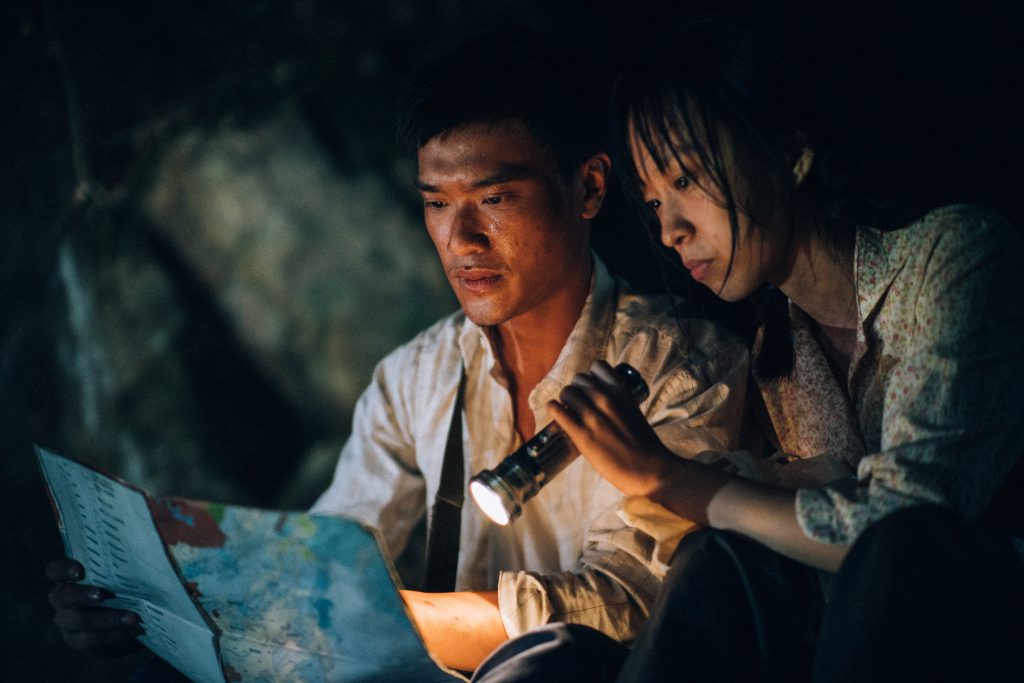
This is the first in a series of essays commissioned by PROTODISPATCH.

Tiffany Sia &
Emilie Sin Yi Choi &
Chan Tze-woon

“Documentary Under the Gaze of the State” by Tiffany Sia with Emilie Sin Yi Choi and Chan Tze-Woon is an essay commissioned by PROTODISPATCH, a new digital publication featuring personal perspectives by artists addressing transcontinental concerns, filtered by where they are in the world. It was originally published by the international nonprofit Protocinema and appears here as part of a collaboration between Protocinema and Artnet News.
Three Hongkongers got together in July 2022 to talk about the relationships between documentary filmmaking, protest, who gets to record history, and the challenges of working and screening films under the gaze of the state. — Laura Raicovich, editor of Protodispatch
This interview has been translated from Cantonese and has been edited for clarity and length.
***
Emilie Sin Yi Choi: I am curious, Tze-woon and Tiffany, about how your interest in documentaries began. And how do you make documentaries in response to the current social situation in Hong Kong?
Chan Tze-woon: To me, documentary is a medium which is relatively direct to express. When I started working in filmmaking after my graduation from college, I participated in the production of fiction films. During the outbreak of the Umbrella Movement in 2014, I made my first documentary Yellowing, for which I used only one camera. Due to the small-scale production, I could document the scenes, protestors, and the circumstances at a very close proximity.
Tiffany Sia: Documentary as a form of storytelling fails us in many ways. Advocacy documentaries or news reportage chases attention and engagement. In pursuit of legibility and compelling angles for a mass audience, they tend to create a distance to lived reality, drive sensationalism, and specifically, the conventions of the documentary form that rely on exposing a subject may endanger the subjects themselves. Documentary is a fraught framework to challenge narrative norms, but I believe in a kind of experimental approach to challenge or question some practices (做法, meaning ways or approaches). They beg to be undone. Driven by writing and research, I’m interested in expanding how we tell non-fiction and history. I’m interested in documentaries in a more experimental register.
Tze-woon: Tiffany, as you mentioned about the safety of the filmmakers or protestors, I realized that the styles of my first and second documentaries are different due to the varied modes of protest. For example, the Umbrella Movement in 2014 advocated civil disobedience; in this sense, participants were willing to share their own stories, and even explained the reasons embedded in their participation in “illegal” movements in order to express what they were earnest to accomplish or achieve explicitly. At that time, I could relate my own personal stories about participating in the movement. Presenting a personal story is, I believe, the most compelling part of the film, rather than delivering a theory. In this way, I feel that the form and practice of documentary films became a key integral part of the protest.
When it came to 2019, the belief and faith of the protesters had shifted to “be water” and “faceless.” I had to reconsider how I could make my documentary in order to align with the change within the protests. Compared to my documentary in 2014, the documentary that I made in 2019 involved fewer scenes of the battles on the streets themselves. I did not document much about the protests on the street, rather, it was unfolding in the form of aftermaths. It was very challenging to film in these conditions, and it was not appropriate politically as it would have put people in danger.
Another major consideration was the shift in technology related to the protests which influenced my mode of filmmaking. There was less live streaming on social media in 2014. My camera is handy and I could get close to the protestors. In 2019, live streaming has been flooding social media. Everyone used their mobile phone to broadcast online. There were often more than 10,000 people watching over Facebook live. And some of the protestors were able to interact with the people online. The interaction became immediate. My camera was not able to do such a thing. I was lacking the direct interaction between the audience and the social movement. So I thought about what else a documentary could do constantly. Later, in Blue Island, I adopted a form of hybrid documentary that incorporates different generations of resistance as well as reenactments to bring history to the current day. So, I believe the practices of documentaries would be varied depending on the modes of social movement.
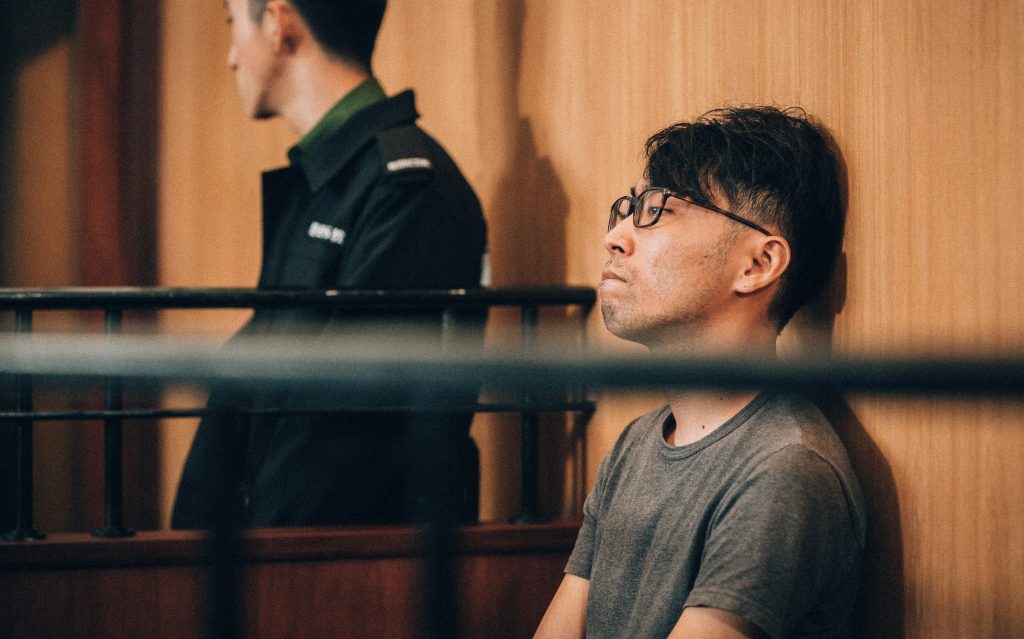
Still from Blue Island (2022), directed by Chan Tze-woon.
Emilie: We notice that there was an upsurge in the number of Hong Kong documentaries in recent years, mainly because of the intense political situation and the rising awareness of independent film. However, not many documentaries tend to delineate the historical discourse of Hong Kong. Also, as Tze-woon mentioned, the formats of documentaries varied vastly, as compared to the documentaries taken in 2014 and 2019. The format of documentaries is much richer now, since it induces thoughts on the moving image itself. With the common use of online media, what is the position of documentary nowadays?
One of the significant contributions of Blue Island in the trajectory of the Hong Kong documentary is to contextualize the historical narrative. The investigation of the 1967 riots in Hong Kong, for instance, and its relation to the context of the Cold War and colonial rule of Hong Kong was insufficient in local films, which was depicted in Blue Island.
The capacity of documentary to initiate the dialogue of history and social reality with a particular practice of mediation, transformation, and negotiation. In fact, there were quite a few examples of Hong Kong documentaries in the past that shed light on the complexities of Hong Kong political discourse with the innovated media technology and peculiar visual forms, like Demonstrations in Support of the Defense of Diaoyu Islands in Hong Kong in 1971 and An Open Letter to the Literary Youth in Hong Kong in 1978. Another vital example is the important collective Video Power, founded in the late 1980s. Due to the emergence and prevalence of video—which is way more convenient for filmmaking—they started to use such a handy camera to document the social incidents in a participatory mode. They even participated in the process of discussions and actions with the people they filmed. This involved the participation of the filmmakers, instead of merely representing the action by the protestors or participants.
Tze-woon: I take this participatory approach also, as I avoid top-down structures. It may not reveal a lot of information like what you see on news reels or other reportage. Instead, it is more of an individual narrative of history, and a different type of storytelling. I use re-enactment—but the perspective is not from the macro history to focus on a person, the point of view comes from a specific person’s experiences and memories of history.
Tiffany: I’m really interested in the challenges of “macro history.” Who has the authority to tell history? Whose version of history becomes the dominant narrative? What is important enough to make history? As filmmakers, I think it’s critical to embrace our perspectives as subjective and through filmmaking, we reveal an individual at the core to illuminate their context. What are the feelings of time and moment?
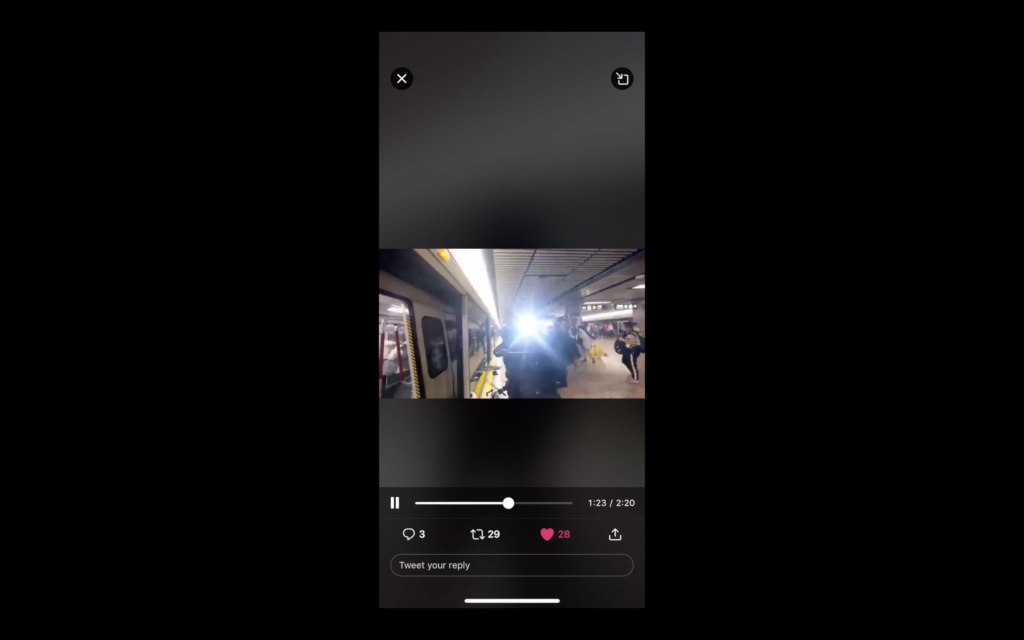
Still from Do Not Circulate (2021), directed by Tiffany Sia.
Tze-woon: Regarding the “official view” of the authorities on a particular political incident, individual documentary production that tries to build a “macro history” by itself can be used as propaganda easily. This approach brings up further questions: Should oral history be counted as history? Is it sufficient if you only choose one person amidst “macro history” to tell the story? In Blue Island, I did not want to present “macro history.” Instead, several historical narratives are presented: the 1967 riots, migration during the Cultural Revolution in China, the Tiananmen Square incident in 1989, and also the contemporary situation. Indeed it involves many complicated events and I did not expect to present everything, or to retell a “macro history” intendedly. The specificity of those individual stories may give more nuanced clues than seeking to represent “macro history” in general.
Further, these individual perspectives are very important after 2019, because the circumstances that people are facing are recurring. For those young people who experienced the turmoil in 2019, many of them are still going through trials, and many of them are in jail. Some of them are suffering from the trauma of having participated in the movements, some of them are considering leaving Hong Kong to seek freedom. Their personal experiences and what they are encountering are the most important parts to me in today’s Hong Kong. That’s why I chose the approach from an individual perspective. No matter if it is about the intersection of the histories or reconnecting them by reenactments, it is still from an individual perspective to examine their respective experiences.
Emilie: Reenactment is an important process in Blue Island. One of the important impacts of Blue Island is that it set up a way to establish a dialogue between two generations, and raised the question of a documentary that may not represent an absolute truth. It allows the “actors” to undergo the history not only through conversations, but also the lived experience through body and affections. It also goes beyond the cinematic realism that we think documentaries tend to embrace.
Tze-woon: The vagaries of memory are important: a person may talk about a single incident for which they are not sure if their memory is correct or they may simply just share what they intend to deliver. This is one of the challenges of reenactment. The protagonists may have forgotten parts of the history or choose the part they decided to remember selectively. There is an intriguing outcome when the reenactment is going through the combination of truth, distance, and fluidity.
Tiffany: Every event is contested. What are we allowed to remember or what is worth recording and what is not worth recording in the history books? There is a hierarchy. In What Rules the Invisible, my mother’s individual memories may be insignificant, but it is the accumulation of detail that matters. The film tells of the psychological residue of ongoing occupation that we are haunted by. Under the current pressure we face, the erasure of Hong Kong or colonial memories is a material challenge. What we lose is not just simply “macro history,” but also the accumulation of small histories and a people’s history.
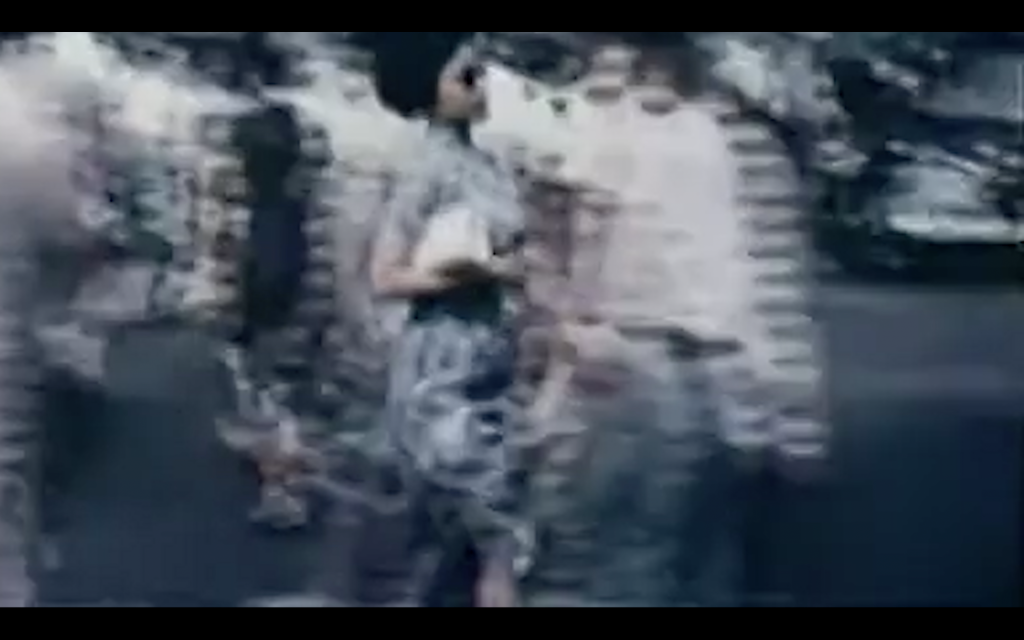
Still from What Rules the Invisible (2022), directed by Tiffany Sia.
Emilie: I also want to ask about the circulation of the films. Never Rest/Unrest has not been officially screened in Hong Kong and Blue Island could not be released in Hong Kong. I think it is paradoxical that the documentaries which are about Hong Kong are “invisible” and cannot be seen by most audiences in Hong Kong. Regarding the blocked circuit of your films in Hong Kong, how do you adopt the alternative forms of circulating or circulate the films outside Hong Kong?
Tze-woon: Yellowing was screened in Hong Kong in 2017 though it could not be included in commercial cinema. But I could still rent theaters or private cinemas for public viewing. So I expected this could also apply to my second film. However, the situation has changed rapidly since 2019, especially after the National Security law was enacted in 2020. The 2021 amendment of the Film Censorship Ordinance also hinders many politically related movies from being screened and circulated.
Another interesting case is my short film Being Rain: Representation and Will (2014), which was funded by the Hong Kong Arts Development Council. The film could be screened officially in Hong Kong in 2014. But if I want to screen it again now, the film has to be vetted by the Office for Film, Newspaper, and Article Administration. However, the office has continually stalled the vetting of this film and I got no answer. I understand this delay as a prohibition from screening this film in Hong Kong even though I have no official response.
Therefore, we are now reaching out to diasporic Hong Kong communities and audiences located overseas, like the U.S. and Canada, for Blue Island. We are also working with distributors in North America and Japan. Blue Island was released in Japan in July this year. In September and October, it will be screened in Europe. This is our strategy at the moment. We are trying to work on different plans in order to gain access to the people of Hong Kong as much as possible.
There are also safety concerns, especially potential legal impact on the people in the film. The distributor evaluates any particular screenings that would pose a threat to the filmmaker also. However, there is no clear indicator of what acts would bring danger to us. We are still trying to test the bottom line, but we will definitely try to find ways to gain more access to the audience in Hong Kong.

Still from Never Rest/Unrest (2019), directed by Tiffany Sia.
Tiffany: I actually screened Never Rest/Unrest at a university in Hong Kong in October 2020, shortly after the enactment of National Security Law. At that time, it was a surprise screening––unannounced beforehand to a class of undergrad students taking a film course. I was giving a lecture and I screened a clip from Never Rest/Unrest. I showed the film alongside other examples of experimental approaches to documentary, such as Sky Hopinka’s Dislocation Blues. I wanted to show films that exposed the students to different forms or strategies of experimental documentaries. There were administrators observing the lecture from the university. I did not know what the university’s reaction would be. But my friend was willing to take a chance to let me engage with the students. There is another instance of a secret screening, but I don’t want to discuss the details here. The school administrators sat silently in the back.
Except for these instances, I have not screened my film anywhere else in Hong Kong. Outside of Hong Kong, my films have been presented at film festivals, especially ones that nurture experimental film, or arts institutions and cultural spaces. I have not had any opportunity to be invited to show my works in Hong Kong––except for invitations for secret screenings––which of course demonstrates these restrictions on film or artworks in the city. At the very least, these limitations show the extent to which people might want to take risks to show certain types of work. I think it’s interesting that my first institutional exhibition in Asia will not be in Hong Kong but in Seoul, Korea at the Seoul Museum of Art.
One of my friends told me directly that if he were to show my works in Hong Kong, they would have to undergo vetting through a censor to show at a public institution, which he surmised would not pass due to a background check that’s necessary for all film and video works. Despite what he was willing to disclose about this emerging shadow bureaucracy, I’ve had a hard time navigating this murky space in Hong Kong. Do programmers and curators simply find my work irrelevant––not “Hong Kong” enough, too “diasporic,” by their metric or cultural definition? Or are they risk-averse for political reasons? Whatever the exact reason, I have not had a chance to present my works to have a meaningful discussion with any kind of public in Hong Kong, and I’ve been frustrated by this sense of opacity around film censorship laws, only exacerbated by programmers and curators not being forthright. I also refuse to adjudicate on the matter of cultural identity, and participate in policing belonging and heritage. Never Rest/Unrest has been torrented, pirated, and uploaded to Karagarga, and I think above all else, it is critical that it lives this way––even if, and perhaps especially, because it lives on through pirated means that may allow Hong Kongers and or really anyone access to the film in a shadow public domain. That excites me.
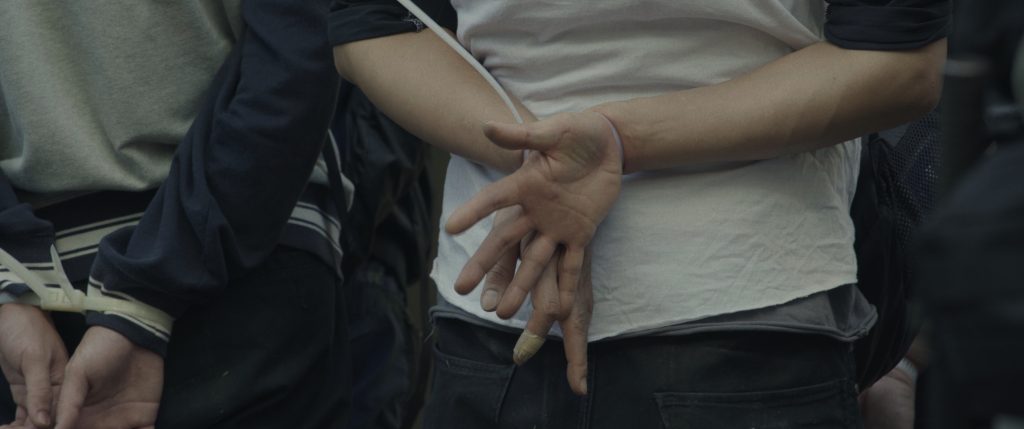
Still from Blue Island (2022), directed by Chan Tze-woon.
Emilie: Actually, I think a diasporic community of Hong Kong is gradually forming, through the examples of Hong Kong Film Festival in London and many “Hong Kong Focus” sections in various overseas film festivals. This community is attached with the affection and identification of being Hong Kong people. Film festivals, in this sense, have become a key site for connection.
Tze-woon: I think the phenomenon of film viewing has been changing according to the situation in Hong Kong. After 2014, people were trying to build something. For example, the film Ten Years (2015), which was compiled from five political short films, could be screened in the cinema. However, it could no longer circulate in the cinema in Hong Kong, as there might be some hidden agenda that prevented the film from being shown. The ways of screening the film then shifted from the cinemas to community and universities. At that time there were a large number of organizations or colleges that were able to screen the film. I then realized that politically and socially engaged documentaries could gain access to many audiences under this social network. However, this network could not be sustained after the enactment of the National Security Law and Film Censorship Ordinance in 2020. Many organizations who participated in these kinds of screenings have since been disbanded. Also, there is a huge limitation on the screening of films, even circulating on the street, or any kind of public areas, subject to the constraints imposed by the Film Censorship Ordinance. As a result of this government oversight, this screening network is no longer available.
Since these developments in 2019, many people from Hong Kong are now migrating overseas. It is interesting that different communities created by the migrated Hongkongers have been approaching us about the possibility of screening Blue Island in their regions, like London and Japan. They are trying very hard to gain access or help the films reach as many Hongkongers as possible. Another restriction is, of course, the pandemic. Otherwise I think Hongkongers might go somewhere outside of Hong Kong in order to watch the banned films. Due to quarantine measures, it is not feasible at the moment. But I think this might happen in the future.
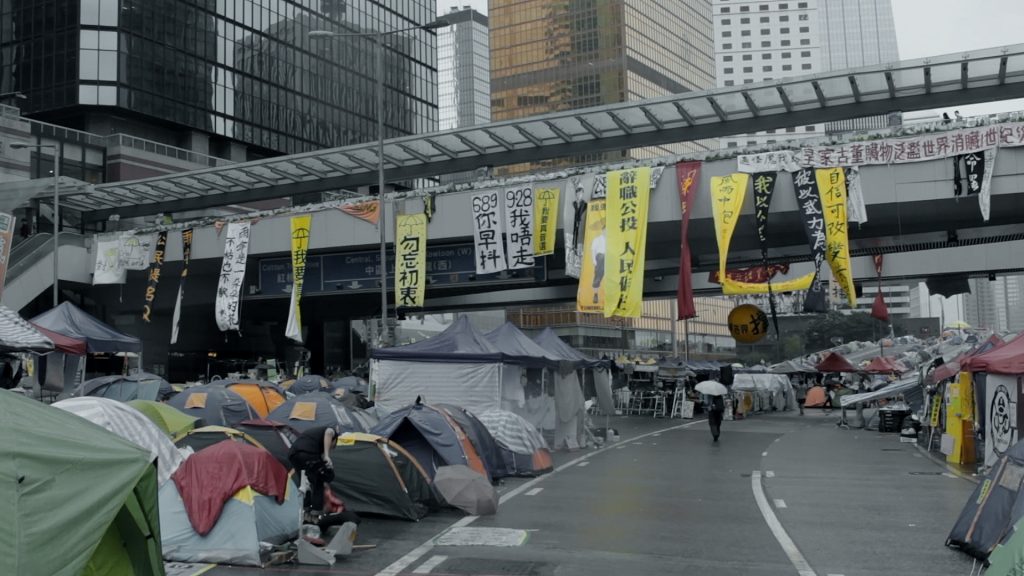
Still from Yellowing (2016), directed by Tze Woon Chan.
Emilie: This reminds me of the film To Singapore With Love (2013) by Tan Pin Pin, which was banned in Singapore. So when it was screened in Malaysia, many people from Singapore went to Malaysia to watch it. I agree that the community of audiences is transforming according to the socio-political context and cultural politics of Hong Kong. Even the private showcase of Beyond the Dream (2019)—a pure love story which was made by the director of Revolution of Our Times (2021), Kiwi Chow—was accused of violating the social-distancing rules in an undercover raid. We need to keep accommodating to the changing situation smartly.
Tiffany: I think this also speaks to the broader history of Sinophone cinema, and its major imprint not only in shaping national cinema, but cinema more broadly. Extending beyond the borders of China, Sinophone also traces the history of Taiwan, and the Sino-diaspora in Asia and beyond. Our memory lives through cinema in many ways outside the confines of the nationally defined canon of cinema, not just in this moment. Cinema is an important medium to capture transnational historical memory––this is so evident in the legacy of Sinophone cinema.
Tze-woon: When I edited Blue Island in 2021, I felt that the film could not be screened in Hong Kong. At that time I could feel the restriction on film was huge. I think this posed a challenge to the practice of documentary itself. After 2019, there were many Hong Kong pop songs making references to recent political events related to migration or protest, which were at the forefront of people’s minds. These songs often used a love story to camouflage or talk about the loss of freedom. You can articulate these themes with the lyrics easily. And protesters in jail can listen to such songs on the radio and may write their feelings in letters. In that sense, music embraces beyond barriers and distances. I felt the form of a film was impotent, suddenly. But subsequently I found that a film may do something that music is incapable of—it might do something on a larger scale, related to history or memory, that expands the narrative of the protests.
Even if the film is not being seen in Hong Kong, it still shares its uniqueness. This is something that happened after 2019. You may observe that Hongkongers from overseas are trying eagerly to connect to Hong Kong. Through film, beside the messages conveyed by the film itself, it also serves as a platform for them to reunite or communicate with each other. Now the Hongkongers from overseas can establish the same community network through the films to extend their focus and connection with Hong Kong. I think film is quite unique and worth it. It could do something that other mediums cannot do.
Tiffany: When I watched Blue Island for the third time at MoMA, I did not expect I would cry. We were milling around outside the museum after the screening, and I saw Chan Tze-woon and I just burst into tears. Something special happened in the cinema. I was transported. I felt like I was in Hong Kong again, but there we were on 53rd treet. Compared to other mediums, like artworks or text, films have the power to convey an immediate feeling that is so total.
Emilie: I think this is the strength of the documentary itself – enriching our insights and affections towards “reality” with various layers of narratives.